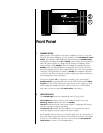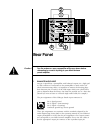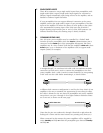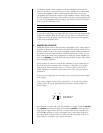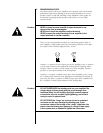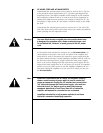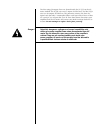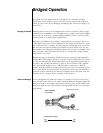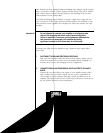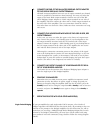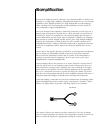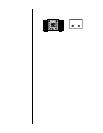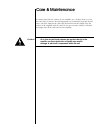
22
Bridged Operation
Your Mark Levinson amplifier has been designed to be extremely versatile.
Should your needs change or grow over time, you may wish to add additional
power by one of two means: Bridging, or Biamping. We will discuss bridged op-
eration first.
Bridging Explained Bridging refers to the act of reconfiguring the circuitry in both the left and right
channels of your amplifier to act as though it were a single, much larger amplifier.
(Of course, you will need a second bridged amplifier for stereo; more for multi-
channel sound, as in home theater applications.)
Bridging is accomplished by sending a normal signal to one channel and an in-
verted signal to the other. In this configuration, one channel will always be “push-
ing” when the other is “pulling.” By connecting the loudspeaker leads across the
left and right red output terminals, the amplifier can now deliver twice the nor-
mal voltage to the loudspeaker. Working together this way, the two amplifier chan-
nels can deliver almost four times the power to a speaker that a single channel
could deliver on its own.
Bridged operation is particularly beneficial with low sensitivity, high-impedance
loudspeakers (8Ω or higher) that have a greater need for voltage than for current.
It is not recommended for loudspeakers that have an impedance significantly be-
low 4Ω, as the speaker’s impedance is “split” by the two halves of the amplifier.
Thus the bridged amplifier “sees” a 2Ω load when connected to a 4Ω loud-
speaker. Prolonged delivery of high power levels into such a low impedance cre-
ates a great deal of heat that needs to be dissipated. (Of course, your amplifier is
protected against overheating, but having an amplifier shut itself down even tem-
porarily can put a damper on the evening’s entertainment.)
Balanced Bridging If your preamplifier has balanced outputs, you should use them. For this discus-
sion, we will assume that you are using a Madrigal Balanced Bridging Adapter Kit
for each channel to be bridged. (Alternatively, you may have custom cables built
using your preferred wire and connectors, being careful to follow the wiring dia-
gram below.)
Balanced Bridging Kit
21
3
12
3
12
3
Female XLR Input
Pin 1: signal ground
Pin 2: signal + (non-inverting)
Pin 3: signal – (inverting)
Male XLR Output (normal)
Pin 1: signal ground
Pin 2: signal + (non-inverting)
Pin 3: signal – (inverting)
Male XLR Output (inverted)
Pin 1: not used (floated)
Pin 2: signal – (inverting)
Pin 3: signal + (non-inverting)
Balanced Bridging
Input Adapter
(pin configuration)
Bridging Output Adapter
(not drawn to scale)
(do not connect shield)




